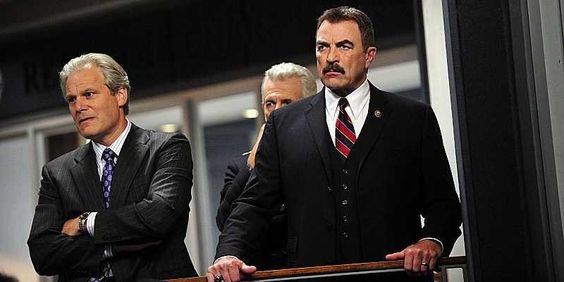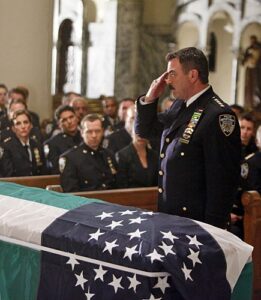
Ponderosa on the Hudson: The Parables of Blue Bloods

For those who came of age in the 1970s, television today is as different from the television of our youth as The Twilight Zone must have been to those who grew up on vaudeville. Having first become addicted to television during its simple “vast wasteland” era (in the famous words of Federal Communications Commission chairman Newton Minow in 1961), I now often find myself lost among intricate story arcs that can cover an entire season, bewildering overlapping plot lines, and pacing far different from that of traditional 43-minute episodes.
Many critics and commentators call this television’s latest “second golden age.” Shows like Mad Men, Breaking Bad, and Homeland have been hailed as genre-busting dramas. Their ability to develop characters in leisurely fashion over several seasons and limn their evolution aligns these series more with serious literature than with popular entertainment. Many in the industry, of course, celebrate the license to explore hitherto ignored themes, such as homosexuality, same-sex marriage, abortion, immigration, drug use, and the like. Not surprisingly, most of the lauded shows are on cable, but even network television has evolved with the times.
Cop shows have not been exempt from this trend. In the past decades they relied heavily on Good-vs.-Bad storytelling, but some of today’s police dramas would be unrecognizable to their predecessors. In the 1980s I avidly watched Hill Street Blues, which was considered cutting-edge; yet if it were on today, it could not hold a candle to shows like The Wire, with its intense story arcs and brutal characterizations.
Now in its sixth season, CBS’s Blue Bloods seems at first glance to have little to do with television’s latest renaissance. Compared with Sons of Anarchy or Boardwalk Empire, it feels like a throwback to the 1950s. Its plots overwhelmingly unfold in one episode, with only one or two story lines having stretched longer. By species, it is more related to Dragnet than to The Wire, more Adam-12 than True Detective.
In spirit, though, Blue Bloods is really an urban western, reviving a genre that defines television drama from its infancy through the early 1970s. The story of the Reagans, an Irish Catholic family of New York City cops, Blue Bloods is Ponderosa on the Hudson. However, it is not a straightforward police procedure, like the venerable Law and Order empire. Rather, it is a moral play. It eschews the moral ambiguity that cable shows are steeped in, focusing instead on a catechism of good and evil.
In Blue Bloods, the identity of an individual is inseparable from his family ties, whether of blood or shield.
The core of Blue Bloods is family — both the Reagans, who serve as the central characters, and the larger New York Police Department. In the world of Blue Bloods, family is not just an important unit, but the most important unit in society. This is a very traditional, if not anti-modern, idea. In the show, the identity of an individual is inseparable from his family ties, whether of blood or shield. One is judged by how one acts within and towards family, and personal strengths are employed in no small part for the sake of family, or to maintain its values. Conversely, an individual’s fate is largely preordained when he is part of a family that has chosen evil, such as the Sanfino crime family from the series’ second season, or falls in with dangerous surrogate families, such as the ubiquitous gangs.
